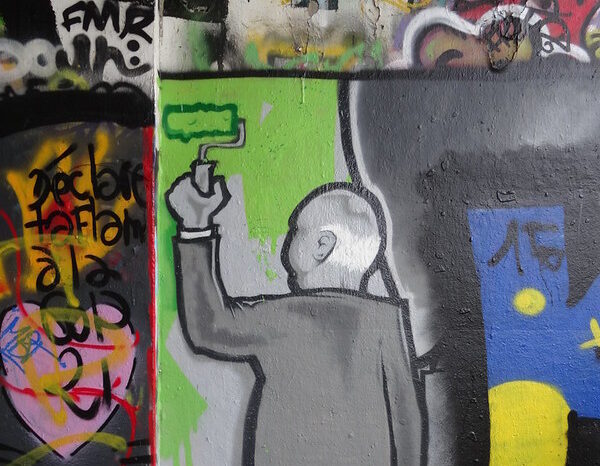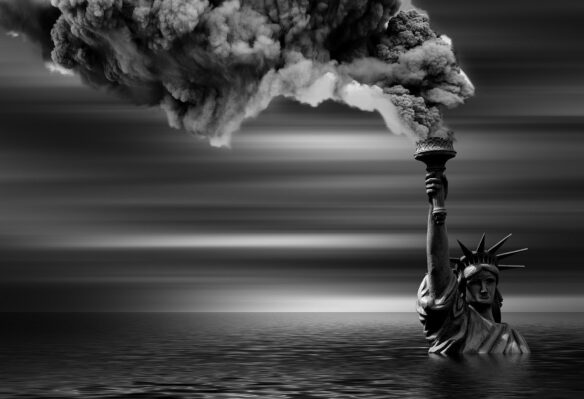Advertising is an incredibly powerful tool for convincing us to buy things we don’t need with money we don’t have to impress people we don’t like. Last year the United States spent nearly $300 billion on advertising, and now that we are only about six weeks from Christmas, we can expect to be inundated with ads to convince us to get out our credit cards and close out the year on a spending spree. According to the latest data from the National Retail Federation, individual American consumers spend an average of $998 on gifts and holiday stuff each Christmas, which is the same as the median pre-tax weekly salary of $1,001.
There is another form of advertising that has become widespread and deceitful, and that has even been given a name, Greenwashing. Many of us look for labels on products or companies that tout themselves as being green or producing stuff that is organic, both qualities that are very difficult to verify or confirm.
A recent report by Earth.Org calls out ten companies for Greenwashing. Some on this list may not be surprises, but others may well be. The following lists those ten companies and a brief description of why they are on the list.
Volkswagen: While the company was touting their low-emissions and eco-friendly features of its vehicles in their marketing and advertising campaigns, they admitted to cheating emissions tests by fitting some of their vehicles with software that could detect when they were being tested for emissions and then altering the performance to reduce the emissions level.
BP: The fossil fuel giant BP changed their name to Beyond Petroleum and recently made a big show of adding solar panels on their gas stations. A complaint was lodged against them recently, however, for misleading the public (Greenwashing) with its ads that were focused on the firm’s low-carbon energy products when over 96% of its annual budget is directed towards oil and gas.
ExxonMobil: This petroleum giant has the dubious distinction of having produced the nation’s worst spill in U.S. history, prior to the Deepwater Horizon blowout in the Gulf of Mexico. One of their oil tankers, the Exxon Valdez, spilled 11 million gallons of crude oil into Alaska’s Prince William Sound after hitting a well-marked reef, in what was called the worst drunk-driving accident in history. The spill coated 1,300 miles of shoreline with crude oil, killing countless seabirds and otters. Recently, ExxonMobil came under fire for advertising that suggested that its experimental algae biofuels could one day reduce transport emissions. It has no company-wide net zero target and its 2025 emission reduction targets do not include the vast majority of emissions resulting from its products.
Nestlé: This company released a statement in 2018 saying that it had “ambitions” for its packaging to be 100% recyclable or reusable by 2025, without any clear targets or timeline to accompany its ambitions. Greenpeace responded that the company’s statement on plastic packaging won’t move forward the reduction of single-use plastics significantly and sets an incredibly low standard as the world’s largest food and beverage company. In Break Free From Plastic’s 2020 Annual Report, Nestlé, along with Coca-Cola and PepsiCo, were named the planet’s top plastic polluters for the third year in a row.
Coca-Cola: In the annual report mentioned above, Coca-Cola was ranked as the world’s number 1 plastic polluter, its second consecutive year on top. In 2020, the company came under fire when it announced that it wouldn’t abandon plastic bottles because they were popular with customers. In June 2021, the Earth Island Institute filed a lawsuit against Coca-Cola for falsely advertising that it is sustainable and eco-friendly (Greenwashing) despite being the largest plastic polluter on the planet. Earlier this past week, Coca-Cola, a key sponsor behind the world’s leading climate conference taking place in Egypt this past week (Cop27) was named the top plastic polluter worldwide for the fifth year in a row.
Starbucks: Starbucks released a “strawless lid” in 2018 as part of its sustainability drive, however this lid contained more plastic than the old lid and straw combined. Starbucks didn’t dispute this but claimed that the new lid is made of polypropylene, a commonly-accepted recyclable plastic that “can be captured in recycling infrastructure”. It was quickly pointed out that only about 9% of the world’s plastic is actually recycled, so the company can’t just assume that the new lids will be recycled. Those recycling symbols on so many plastic containers are another example of Greenwashing as over 90% either can’t be or isn’t recycled.
IKEA: This well-known corporation has always been considered as a bright light of sustainability, at least prior to 2020 when the furniture retailer was linked to illegal logging in Ukraine by the NGO Earthsight. The wood certification scheme that IKEA uses, Forest Stewardship Council, has been criticized as having minimal impact on tropical deforestation and at times has served only to provide cover for trafficking in illegal lumber.
Plastic Water Bottle Companies: A more subtle form of Greenwashing occurs with the plastic water bottle companies like Poland Spring, Evian and Deer Park, which all have nature on their labels. But they are all plastic water bottles designed and produced to be single-use and are contributing to the global plastic problem. A new Greenpeace report points out that no plastic is truly recyclable, not even the water bottles and milk jugs that conscientious people usually drop into those blue recycling bins. No plastic product meets a common industry standard for recyclability even though they carry the familiar “chasing arrows” recycling symbol. Industry-backed recycling labels on a wide variety of food and drink containers as well as other products perpetuate a myth that we can somehow scale up to handle the roughly 380 million tons of plastic that industry pumps out annually.
Big Banks: For several years now financial institutions have done a lot of advertising about how they are fighting climate change, which are sadly, additional examples of corporate Greenwashing. JP Morgan, Citibank, and Bank of America have issued new “green investment” opportunities. A report released last year, however, by the Rainforest Action Network, showed that big banks – those mentioned above, as well as Wells Fargo, Barclays, Bank of China, HSBC, Goldman Sachs and Deutsche Bank – were still lending massive amounts of money to the industries that contributes most to global warming, such as fossil fuels and deforestation, while boasting that they are leaders of the green transition.
Fast Fashion Brands: H&M, Zara and Uniqlo are among the corporations that were caught Greenwashing in recent years. These brands contribute to the textile waste created by the clothing industry. According to the fashion nonprofit ReMake, 80% of discarded textiles globally are incinerated or taken to landfills, with just 20% actually being reused or recycled.
Green products, or those with green labels or cute little trees, or those corporate ads that state how green or sustainable they are, appeal to many of us as we are trying to do the right thing and reduce our environmental impacts. Greenwashing, however, has become all too common, and we all need to look more carefully at the products we consume (like single use plastic water bottles, among others) and by making conscientious choices as consumers, we can have a big impact. If product sales go down, the corporations will get gradually get the message. We need to all pursue aggressive incrementalism.









